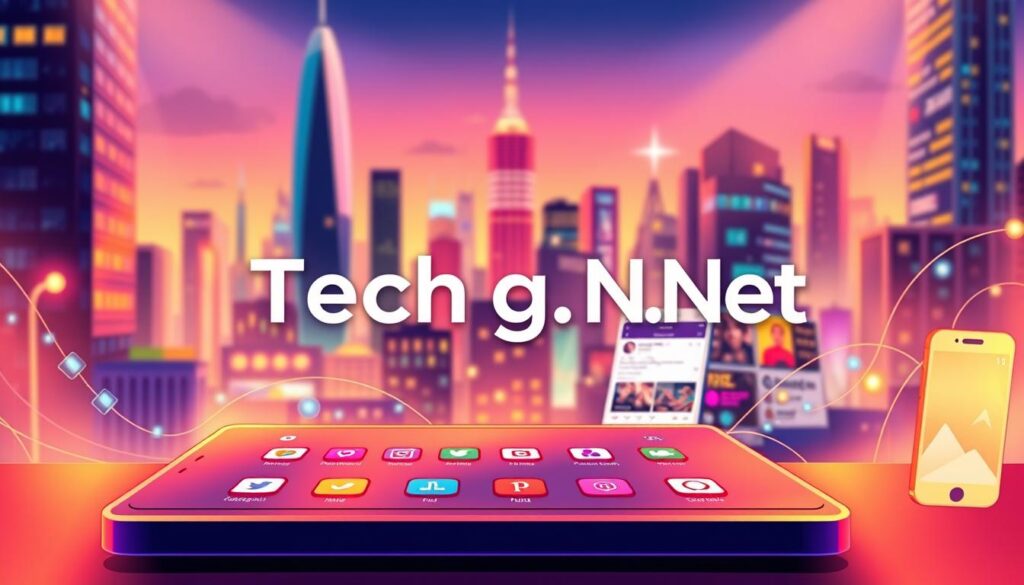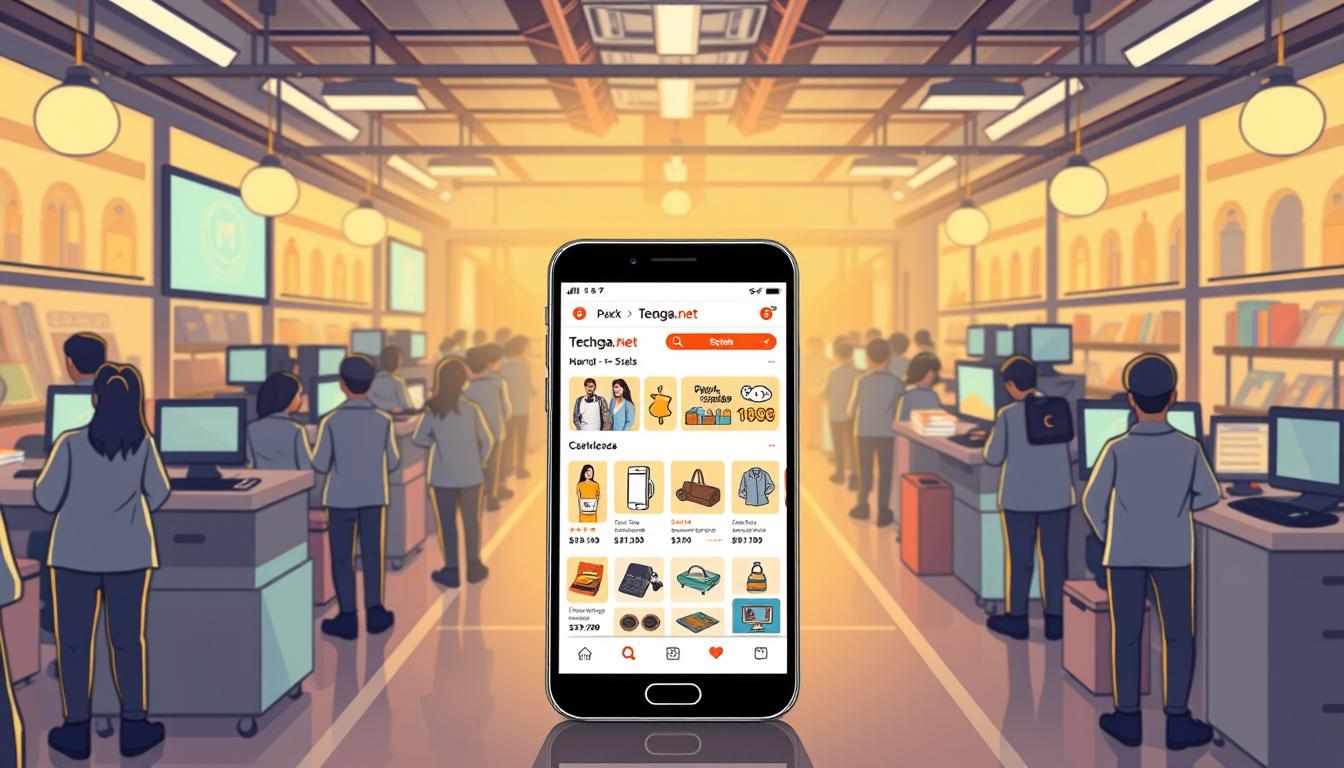In today’s digital landscape, establishing a strong presence on platforms like Instagram and Facebook is essential for ecommerce success. These platforms have evolved from simple connection tools into powerful hubs for product discovery and sales. With features like Instagram Shops and Facebook Shops, businesses can seamlessly integrate their stores, making it easier for users to explore and purchase products.
As we look ahead to 2025, emerging technologies and trends will continue to shape the future of ecommerce. Brands that leverage these advancements will stay ahead of the curve. From live shopping events to influencer partnerships, the opportunities for growth are endless.
Engaging with your audience through comments and shares not only boosts brand awareness but also drives traffic and increases sales. By utilizing built-in analytics, businesses can better understand their audience and refine their strategies for maximum impact.
Key Takeaways
- Platforms like Instagram and Facebook are essential for product discovery and sales.
- Features such as Instagram Shops simplify the shopping experience for users.
- Emerging technologies will shape the future of ecommerce by 2025.
- Engaging with your audience boosts brand awareness and drives sales.
- Built-in analytics help businesses refine their strategies for better results.
The Evolution of Social Media and Ecommerce
From its humble beginnings as a way to connect friends, social platforms have transformed into powerful tools for commerce. What started as a space for personal interactions now drives sales and shapes how brands engage with their audiences.
Platforms like Facebook and Instagram initially focused on connecting people. Over time, they introduced features like shoppable posts and integrated stores. These changes allowed businesses to showcase products directly to consumers, shortening the sales cycle and boosting impulse buying.
Pinterest, for example, has become a key player in driving commerce. Its visual discovery model helps users find products they love, making it a go-to platform for brands aiming to increase sales. By leveraging these tools, businesses can create seamless shopping experiences.
Brands have also adapted their strategies to incorporate targeted promotions. Features like Instagram Shops and Facebook Shops enable businesses to reach their audience more effectively. This evolution highlights the importance of staying updated with platform trends.
As we look ahead, the integration of commerce into social platforms will only deepen. By understanding this evolution, brands can craft strategies that resonate with their audience and drive long-term success.
Social Media Marketing for Ecommerce: Key Strategies
Instagram has become a powerhouse for brands looking to connect directly with their audience. With its visual appeal and user-friendly features, it’s no wonder businesses are flocking to this platform to showcase their products and drive sales.
One of the most effective strategies is choosing the right social media platform. Instagram, for instance, excels in product discovery. 60% of users find new products here, making it a must for ecommerce brands. By leveraging Instagram’s shoppable posts and Stories, businesses can create a seamless shopping experience.

Targeting the right person is equally important. Understanding your audience’s preferences and behaviors helps craft content that resonates. For example, brands like Solo Stove and WallyGrow have successfully used Instagram to build long-term loyalty by engaging with their followers authentically.
Integrating store capabilities directly into platforms like Instagram simplifies the shopping journey. Features like Instagram Shops allow users to browse and purchase without leaving the app. This not only boosts convenience but also increases impulse buying.
“By merging organic and paid tactics, brands can maximize visibility and drive sales effectively.”
Here are some actionable strategies to enhance your efforts:
- Use Instagram’s visual tools to showcase products creatively.
- Target your ideal customer with personalized content.
- Integrate storefront features for a seamless shopping experience.
- Combine organic posts with paid ads to expand reach.
For businesses looking to optimize their online presence, investing in expert eCommerce website design and development is crucial. A well-designed site complements your social efforts, ensuring a cohesive customer journey.
Building an Authentic Brand Presence on Social Platforms
Authenticity is the cornerstone of building trust and engagement online. In a world where audiences crave genuine connections, defining your brand identity is more important than ever. It’s not just about logos or colors—it’s about the values and stories that make your brand unique.
Defining Your Brand Identity
Your brand identity is the foundation of how you connect with your audience. It’s what sets you apart in a crowded space. Start by identifying your core values and mission. These elements should guide every piece of content you create.
Consistency is key. Whether it’s your tone of voice or visual style, maintaining a cohesive identity helps build recognition. For example, brands like Patagonia and Glossier have mastered this by staying true to their values and aesthetics.

Visual Storytelling Techniques
Visual storytelling is a powerful way to captivate your audience. It’s not just about pretty pictures—it’s about creating narratives that evoke emotion. Use images, videos, and graphics to tell your brand’s story in a way that resonates.
Timely content can also make a big impact. For instance, posting about seasonal trends or current events shows your brand is in tune with the world. Collaborating with influencers can amplify this effect, as their authentic voices add credibility to your message.
“People don’t buy from brands; they buy from people they trust.”
Here are some tips to enhance your visual storytelling:
- Use high-quality visuals that align with your brand’s identity.
- Incorporate user-generated content to build trust.
- Experiment with formats like reels or carousels to keep your audience engaged.
By blending creativity with authenticity, you can create a brand presence that not only stands out but also fosters long-term loyalty.
Crafting a Comprehensive Social Media Strategy
To thrive in the digital space, businesses need a plan that balances creativity and analytics. A well-rounded media strategy starts with clear goals and actionable steps. It’s not just about posting content; it’s about creating a roadmap that drives measurable results.

Setting SMART Goals
SMART goals—Specific, Measurable, Achievable, Relevant, and Time-bound—are the foundation of any successful strategy. For example, aiming to increase engagement by 20% in three months is a SMART goal. It’s clear, trackable, and tied to a specific timeline.
Data plays a crucial role here. By analyzing metrics like click-through rates and conversions, businesses can refine their approach. This ensures every effort aligns with broader objectives.
Balancing Organic and Paid Tactics
Combining organic efforts with paid campaigns maximizes reach and impact. Platforms like Facebook offer tools to target specific audiences, ensuring your content reaches the right people.
Organic posts build trust and authenticity, while paid ads amplify visibility. For instance, a business might use organic posts to engage followers and paid ads to attract new customers.
“The key to success is blending creativity with data-driven decisions.”
Here’s a breakdown of how to balance both:
| Tactic | Benefits |
|---|---|
| Organic Content | Builds trust, fosters engagement, and enhances brand loyalty. |
| Paid Ads | Expands reach, targets specific demographics, and drives quick results. |
Fine-tuning your profile is equally important. A well-optimized profile with relevant keywords and a clear call-to-action can significantly boost engagement. For example, businesses that update their profiles regularly see higher conversion rates.
By adopting a comprehensive social media strategy, businesses can create a cohesive plan that drives growth and fosters long-term success.
Developing Engaging Social Content for E-commerce
User-generated content has become a powerful tool for businesses to connect with their customers. When real people share their experiences, it builds trust and credibility. This authenticity is what drives engagement and encourages others to explore your products.

User-Generated Content and Testimonials
Customer reviews and testimonials are more than just feedback—they’re a channel for building trust. Studies show that user-generated content can increase engagement by up to 28%. When potential buyers see real people sharing their experiences, it reduces uncertainty and boosts confidence in your brand.
Brands like Glossier and Patagonia have mastered this approach. They encourage their customers to share photos and stories, which they then feature on their media platform. This not only highlights their products but also creates a sense of community.
“People trust people, not ads. User-generated content is the future of authentic marketing.”
Here’s how you can create a strategy around user-generated content:
- Encourage customers to share their experiences through contests or incentives.
- Feature their content on your website and social channels.
- Use testimonials to highlight the benefits of your products.
By leveraging these methods, you can turn your customers into brand advocates. Their stories will not only drive engagement but also direct traffic to your ecommerce site.
| Strategy | Impact |
|---|---|
| Customer Reviews | Builds trust and reduces purchase hesitation. |
| User-Generated Photos | Increases engagement and showcases products in real-life settings. |
| Testimonials | Highlights product benefits and builds credibility. |
Authentic content is the cornerstone of a successful business strategy. By focusing on real customer experiences, you can create a genuine connection that drives long-term loyalty.
Leveraging Social Commerce Tools for Seamless Shopping
Seamless shopping experiences are now at the forefront of online retail, thanks to innovative tools that bridge the gap between discovery and purchase. These tools simplify the path to purchase, making it easier for customers to buy directly from their favorite platforms.

Utilizing Native Shopping Features
Native shopping features, like Facebook Shops and Instagram product tagging, allow users to explore and buy products without leaving the app. This in-app functionality reduces friction, making the buying process smoother and faster.
For example, businesses can tag products in their posts, enabling users to click and purchase instantly. This not only boosts convenience but also drives targeted traffic to their pages. Sephora, for instance, has seen significant success by integrating shoppable tutorials on TikTok.
Here’s how these tools benefit businesses:
- Direct in-app purchases: Customers can buy products without navigating away from the platform.
- Reduced friction: Simplified processes lead to higher conversion rates.
- Increased traffic: Well-crafted posts drive users to dedicated shopping pages.
By leveraging these tools, businesses can create a seamless shopping experience that enhances customer satisfaction and boosts revenue. For more insights on optimizing your online presence, explore our guide on mastering SEO techniques.
The rise of mobile commerce further highlights the importance of these tools. As more consumers shop on their phones, integrating social commerce features ensures your brand stays competitive. With the right strategy, you can turn casual browsers into loyal customers.
Embracing Trends and Technologies in Ecommerce 2025
The future of online shopping is being reshaped by cutting-edge technologies and innovative strategies. As we approach 2025, businesses must adapt to stay competitive and meet evolving consumer expectations. From immersive experiences to advanced tools, the landscape of ecommerce is transforming rapidly.
Emerging Technologies Shaping Ecommerce
Augmented Reality (AR) and Virtual Reality (VR) are revolutionizing how consumers interact with products. These technologies allow shoppers to visualize items in their own space or try them on virtually. For example, furniture brands are using AR to let customers see how a couch would look in their living room.
Video content is another game-changer. Short, engaging videos showcase products in action, helping consumers make informed decisions. Platforms like TikTok and Instagram are leading this trend, with brands leveraging video tutorials and demos to drive sales.
“The integration of AR and video content is not just a trend—it’s the future of shopping.”
Future Growth Opportunities
Interactive experiences are creating new opportunities for growth. Features like virtual showrooms and live shopping events are enhancing the online shopping journey. These tools not only engage consumers but also reduce return rates by ensuring they know exactly what they’re buying.
Personalization is another key driver. By 2025, AI-powered tools will offer tailored recommendations based on user behavior. This level of customization boosts satisfaction and encourages repeat purchases.
Here’s how businesses can stay ahead:
- Invest in AR/VR tools to create immersive shopping experiences.
- Use video content to showcase products and build trust.
- Leverage AI for personalized recommendations and dynamic pricing.
By embracing these technologies, brands can create seamless, engaging experiences that drive long-term success.
Optimizing Social Media Platforms for Maximum Impact
Maximizing platform performance is key to achieving better results in today’s competitive digital space. To stand out, businesses must use social media strategically, focusing on tools and techniques that enhance reach and engagement.
One effective way to optimize is through A/B testing. By experimenting with different content formats, headlines, and visuals, you can identify what resonates most with your audience. This data-driven approach ensures your efforts are aligned with audience preferences.
Refined targeting is another crucial strategy. Platforms offer advanced tools to segment audiences based on demographics, interests, and behaviors. By tailoring your content to specific groups, you can boost relevance and engagement.
Consistency in messaging and visual presentation also plays a vital role. A cohesive brand identity across all channels builds recognition and trust. For example, using the same tone, colors, and logos helps create a seamless experience for your audience.
“Optimization isn’t just about posting content—it’s about creating meaningful connections.”
Here are some actionable tips to enhance your strategy:
- Leverage analytics tools to track performance and refine your approach.
- Experiment with diverse content formats like videos, infographics, and polls.
- Maintain a consistent posting schedule to keep your audience engaged.
- Use platform-specific features, such as shoppable posts, to simplify the buying process.
By adopting these techniques, you can transform your platform presence and drive meaningful results. Whether it’s through social commerce tools or refined targeting, the right strategies can make all the difference.
Influencer Partnerships and Customer Engagement
Collaborating with influencers has become a game-changer for brands aiming to connect authentically with their audience. These partnerships not only expand reach but also build credibility through trusted voices. By aligning with influencers who share your values, you can create meaningful connections that drive engagement and loyalty.
Partnering with Influencers
Influencers bring a unique ability to resonate with their followers. Brands like Spikeball and Aerie have successfully leveraged these collaborations to boost visibility and trust. The key is to choose influencers whose audience aligns with your target customer base.
Here are some strategies to ensure successful partnerships:
- Identify influencers who genuinely align with your brand values.
- Focus on micro-influencers for higher engagement rates.
- Use dedicated tools to manage campaigns efficiently.
“Influencers are not just promoters; they are trusted voices that shape consumer decisions.”
Encouraging Customer Reviews
Customer reviews are a powerful tool for building trust and social proof. Encouraging your audience to share their experiences can significantly impact purchasing decisions. Brands like Glossier have mastered this by showcasing user-generated content.
Here’s how to encourage detailed reviews:
- Offer incentives for leaving feedback, such as discounts or rewards.
- Make the review process simple and accessible.
- Highlight positive testimonials on your website and social channels.
By combining influencer partnerships with authentic customer reviews, your company can create a strong foundation for long-term success. These strategies not only drive engagement but also foster trust and loyalty among your audience.
Integrating Analytics to Drive Social Media Success
Data-driven decisions are transforming how businesses approach their online presence. By leveraging analytics, we can gain actionable insights that refine our strategy and maximize results. Tools like Hootsuite and in-platform insights provide a clear picture of what works and what needs improvement.
Tracking Key Metrics for ROI
Understanding key metrics is essential for measuring success. Metrics like profile visits, engagement rates, and click-through rates offer valuable insights into campaign performance. For example, 78% of organizations report that data-driven marketing increases lead conversion and customer acquisition.
Here’s how to make the most of your analytics:
- Monitor engagement rates: Identify which content resonates most with your audience.
- Track conversions: Measure how effectively your efforts drive sales or sign-ups.
- Analyze audience behavior: Use data to refine targeting and personalize content.
By continuously refining your strategy based on these insights, you can achieve higher ROI and long-term success. For instance, one ecommerce store saw a 25% increase in engagement and a 15% boost in sales within three months using this approach.
“Analytics isn’t just about numbers—it’s about understanding your audience and delivering value.”
Integrating analytics into your account management ensures that every decision is backed by data. This not only improves efficiency but also helps you stay ahead in a competitive landscape. Start by setting clear goals and using the right tools to track progress effectively.
Enhancing Customer Service Through Social Media
Customer service has evolved into a critical component of building trust and loyalty in the digital age. Platforms are no longer just for sharing content—they’ve become essential channels for resolving issues and fostering meaningful connections. By leveraging real-time support tools, businesses can create seamless experiences that leave a lasting impression.
Leveraging Real-Time Support
Real-time engagement is transforming how brands interact with their audience. Tools like unified inboxes and AI chatbots enable businesses to respond promptly, ensuring customers feel heard and valued. For instance, 42% of consumers expect a response within 60 minutes, and meeting this expectation can significantly boost satisfaction.
Proactive engagement is equally important. By addressing concerns before they escalate, brands can turn potential complaints into opportunities to build loyalty. Studies show that 71% of consumers are likely to recommend a brand after a positive service experience.
“Exceptional service isn’t just about solving problems—it’s about creating moments that customers remember.”
Here are some best practices for integrating real-time support tools:
- Use AI chatbots to handle common inquiries efficiently.
- Monitor platforms for mentions and respond proactively.
- Train your team to provide consistent, empathetic support.
By adopting these strategies, businesses can enhance their reputation and drive higher purchase rates. Platforms like Facebook and Twitter are not just for engagement—they’re powerful tools for delivering exceptional service.
Overcoming Common Challenges in Social Media Ecommerce
Building a successful presence online comes with its own set of hurdles that brands must overcome. From content fatigue to algorithm changes, the digital landscape is constantly evolving. To thrive, businesses need to adapt and implement strategies that keep them ahead of the curve.
One of the most common challenges is content saturation. With so many brands vying for attention, it’s easy to get lost in the noise. To stand out, focus on creating unique, value-driven content that resonates with your target audience. For example, storytelling and behind-the-scenes glimpses can humanize your brand and foster deeper connections.
Another obstacle is the ever-changing algorithms that dictate content visibility. Staying updated with platform updates and experimenting with different formats can help maintain reach. For instance, leveraging video content or interactive posts often performs better in algorithm-driven feeds.
“Adaptability is key. Brands that stay agile and responsive to changes are the ones that succeed.”
Here are some actionable strategies to tackle these challenges:
- Diversify your content: Mix product promotions with educational or entertaining posts to keep your audience engaged.
- Engage authentically: Respond to comments and messages promptly to build trust and loyalty.
- Leverage analytics: Use data to refine your approach and focus on what works best for your audience.
By addressing these challenges head-on, brands can create a stronger online presence and drive meaningful results. Whether it’s through innovative content or strategic engagement, the right approach can turn obstacles into opportunities.
Conclusion
As the digital landscape evolves, staying ahead requires a blend of creativity and data-driven strategies. We’ve explored how an integrated approach can help brands connect with their audience and drive meaningful results. From leveraging emerging technologies to crafting authentic stories, the key lies in adaptability and innovation.
Engaging with your audience and building trust through user-generated content are essential for long-term success. Influencer partnerships and real-time interactions further enhance this connection, fostering loyalty and driving growth.
To thrive in this competitive space, brands must remain agile. By combining creative storytelling with actionable insights, you can create a strategy that resonates and delivers measurable results. Let’s embrace these opportunities and continue to innovate for a brighter future.



